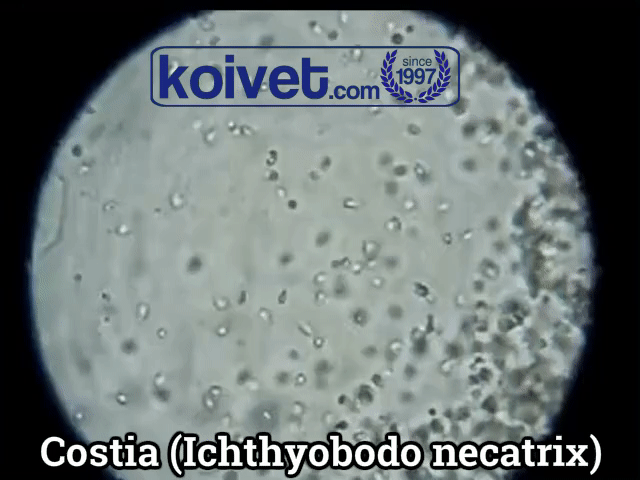Costia
Costia or Ichthyobodo necatrix, is a ciliated protozoan parasite of freshwater fish that also has the capability to kill fish in great numbers, and in a very short time-span. This parasite, in the Springtime, kills a few fish in the morning and you’re netting more in the evening. It kills so hard (at certain times of year) that you could think the fish had KHV.
 The only good fortune in this is that most Costia perishes readily when salted. Costia may be attached, or free swimming. Attached Costia look like little commas stuck into the skin (or gill) by the thin end. Free swimming Costia are graceless wobbly swimmers that look like commas or almost like half open Conch shells.
The only good fortune in this is that most Costia perishes readily when salted. Costia may be attached, or free swimming. Attached Costia look like little commas stuck into the skin (or gill) by the thin end. Free swimming Costia are graceless wobbly swimmers that look like commas or almost like half open Conch shells.
In most cases, Costia clears easily with salt, and this infection should be suspected when a lot of fish are dying, fins may be reddened, and it appears that the fish cannot breathe very well. Spider web lesions in rapidly dying fish are also characteristic as well as excess mucus.
When salt is ineffective in treating Costia, Formalin is recommended.






